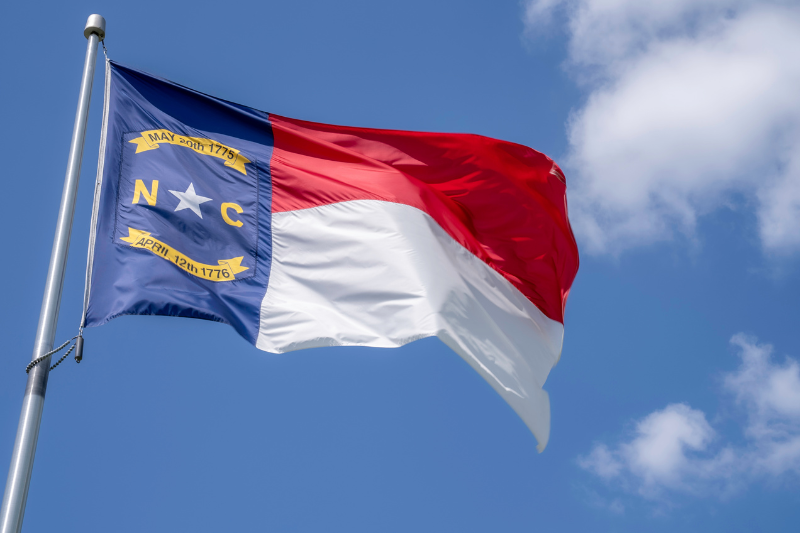Key Takeaways:
- Loyal customers help banks achieve a higher profit margin driven by an emotional connection and help promote these banks through word-of-mouth marketing.
- Technology generates feelings of surprise and delight by streamlining processes and making consumers’ lives easier.
- Legacy banks must look into consumers’ feelings and behaviors while also adopting AI and machine-learning tools to drive greater customer-centricity and remain competitive.
U.S. consumers are shifting their attitudes toward banking service providers. In particular, the competitive landscape of the finance industry led to changes in customer loyalty. Legacy banks must consider how to cultivate consumer loyalty and fight back against challenger banks who are simply doing a better job.
In this article, we’ll explore trends and insights from our customer experience study with clients from 20 of America’s leading banks alongside consumer finance trends as reported by Forbes, Mckinsey, and others to help you develop a clear, full picture of the consumer banking landscape.
Key Findings on Satisfaction and Loyalty in the Finance Industry
In a joint study with Apex, we examined the opinions of 3,243 customers at 20 of the leading financial institutions in the U.S. The goal was to understand how consumers view their relationship with their bank. This revealed four key findings.
1. Customer Loyalty Scores Can Vary by 37%
Among the 10 largest American banks, customer loyalty scores spread by up to 37 percent between providers.
This means the No. 1 bank could have a 90 percent loyalty score, with the No. 10 bank scoring as low as 53 percent.
Loyal consumers deliver two outcomes for banks:
- Higher profit margins driven by an emotional connection, or the idea that the consumer’s “why,” their motivating factor, aligns with the bank
- Word-of-mouth marketing
To drive customer loyalty, banks should consider the customer journey, the customer experience (CX), and service personalization.
2. Challenger Banks Rank 21% Higher Than Legacy Banks
In terms of customer loyalty, challenger banks rank 21 percent higher than their legacy counterparts.
Challenger banks achieve this by delivering forward-thinking and affordable banking services. They are dependable and respectful, with predictable experiences that customers trust.
In response, legacy banks should redevelop their services and strategy to become more predictable. To do this, you must understand and overdeliver on consumers’ emotional expectations and reduce the complexity of banking products.
3. Challenger Banks Experience 10% Higher Engagement Than Legacy Banks
Consumers engage with challenger banks at a
|
Engagement is a connection built on mutual trust, driving consumers to want to come back for more. Consumers engage with challenger banks at a 10 percent higher rate than with legacy banks.
Legacy banks often fail to put customer needs at the heart of their business, leading to a perception of dishonesty and lack of respect. In fact, challenger banks excel in these areas, delivering 20 percent higher perceived honesty and 97 percent higher respect than their legacy competitors.
Legacy banking organizations should consider how technology can improve their CX and explore the adoption of AI and machine-learning tools to drive greater customer-centricity. |
4. Technology Is an Effective Way to Foster Emotional Connection
While technology aims to bridge gaps in the physical world, it also brings people closer at an emotional level.
Technology can generate feelings of surprise and delight by streamlining processes, simplifying services, and making life easier for customers. Challenger banks excel here, creating a customer experience that surpasses that of legacy banks.
Consumers want banking services that integrate with their lifestyle and do not work against it. Banks can use technology to develop a greater understanding of how to show up in customers’ lifestyles.
Legacy banks should aim to collect more data on customer preferences and habits. This gives banks the insight to start targeting customer pain points, driving loyalty and a deeper emotional connection with your brand.
Additional Key Findings and Insights on the U.S. Banking Industry
Outside of our U.S. Banking Loyalty report, there are other valuable insights on the finance and banking industry.
1. 78% of Americans Prefer Digital Banking to In-Person
According to Forbes, 78 percent of Americans prefer to bank digitally through a mobile application or website.
In particular, consumers say transferring funds between accounts, mobile check deposits, and statement and account balance visibility are the most valuable banking app features.
2. BNPL and Cryptocurrency are Increasingly Common
A study by Mckinsey explores buy-now-pay-later (BNPL) and the use of cryptocurrencies.
Around 30 percent pf U.S. consumers financed a purchase using BNPL in 2021, rising from 27 percent of consumers in 2020.
Cryptocurrency has experienced steady growth:
- Market penetration for crypto sat at 16 percent in 2020, with 6 percent actually owning crypto and 10 percent expressing interest in owning crypto.
- Then market penetration increased to 34 percent in 2021, with 20 percent owning crypto and 14 percent interested in owning crypto.
The main reason for adopting cryptocurrency is as an investment vehicle, with 43 percent of respondents listing this reason. Interestingly, only 21 percent of crypto owners use it to make purchases.
3. 45% of Consumers Want Bundled Banking Services
According to PYMNTS, 45 percent of U.S. consumers want bundled banking services.
This means, rather than shopping around at multiple banks for a mortgage, credit card, and loans, consumers want all these services to come from a single vendor. This highlights a growing demand for simplicity and reduced complexity with banking services.
What Should Legacy Banks in America Do to Stay Competitive?
To remain competitive, legacy banks need the same quantity and quality of data insights that challenger banks already have.
This data should focus on revealing the following consumer traits:
- Feelings – What makes the consumer happy or sad? If you understand consumer feelings, you can avoid the negative feelings and foster more positive experiences throughout the customer journey.
- Beliefs – Every person holds a set of beliefs. They could believe that legacy banks are corrupt, or challenger banks are more innovative than legacy banks. The goal is to disprove or re-frame these beliefs through better products, services, and marketing campaigns.
- Behaviors – Based on feelings and beliefs, consumers exhibit behaviors. By cultivating an experience that evokes certain feelings, and conforms with customer beliefs, legacy banks can elicit behavior from consumers that drives growth, loyalty, and satisfaction.
How to Understand Consumer Feelings, Beliefs, and Behaviors via Market Research
Market research allows banks to access a panel of respondents in the finance industry. After designing and developing a market research campaign, banks can collect data and information on what consumers feel, believe, and do when using banking services.
At the end of the campaign, the data is processed to generate actionable market insights. These insights guide new product development, improve marketing strategies, and help you understand market segmentation for better positioning.
Perform Market Research in the Finance Industry with Sago
Sago is a global leader in quantitative and qualitative market research solutions. Our expertise, research technology, and global panel of research participants allows us to facilitate deep market research to support financial institutions and banks in making informed business decisions. See case studies here.
To book a consultation with Sago for your next research project, get in touch today.










 7 Minutes
7 Minutes 











